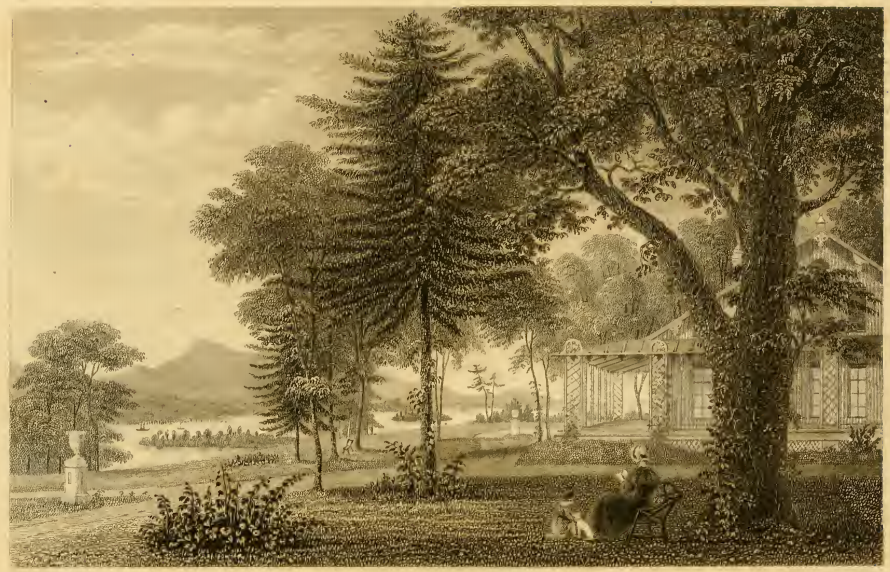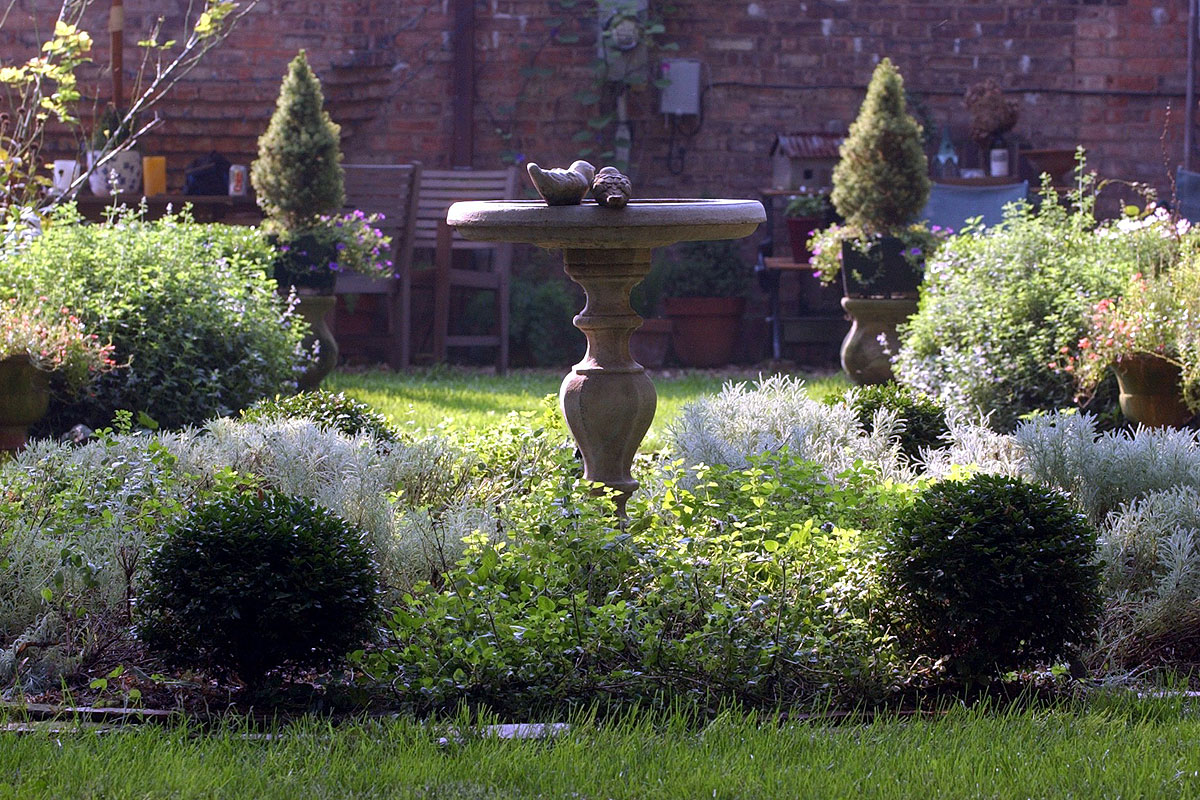The lawn is a romantic and nostalgic idea, with its roots in the British countryside, the leisure of aristocrats, the commons of early America, and the tranquility of post-war suburban America.
I associate it with misery. Much of my adolescence was spent pushing an old lawn mower—its automatic drive long dead—for a couple hours across an acre of rural exurban clay in the depths of Southern summers. That clay hid underground bees' nests, which every couple mowings I would hit; sometimes I was fortunate enough to only notice the cloud of bees when I turned around to make another pass, sometimes I had to flee across the lawn to avoid them. The day I left for college I mowed the lawn; a bee stung me on the knuckle of my thumb, which I could barely move for the first few days of school.
As a Chicago homeowner it's less of a drag, but still kind of absurd: For a patch of dirt about the size of a studio apartment, I have to own a lawn mower, keep it charged, and continue to rake and sow the areas where seed inexplicably won't take. At least my childhood lawn was big enough to play catch in; my city lawn gets virtually no use other than maintaining it. So I keep struggling with this anachronism for its own sake.
Why? It's largely Frederick Law Olmsted's fault.
Olmsted was the protégé of a British-born landscape architect named Calvert Vaux, who came to America to work with the country's first great landscape architect, Andrew Jackson Downing. Downing was an Anglophile whose first great work, published in 1841, set the tone for the practice in its early years in America, borrowing heavily from and lavishly praising Vaux's country. Despite an attempt to Americanize the practice, Downing was enraptured by the tastes of rich Brits (emphasis mine):
As the modern style owes its origin mainly to the English, so it has been developed and carried to its greatest perfection in the British Islands. The law of primogeniture, which has so long there existed, in itself, contributes greatly to the continual improvement and embellishment of those vast landed estates which remain perpetually in the hands of the same family. Magnificent buildings added to by each succeeding generation, who often preserve also the older portions with the most scrupulous care, wide spread parks, clothed with a thick velvet turf, which amid their moist atmosphere preserves during great part of the year an emerald greenness… these advantages in the hands of the most intelligent and the wealthiest aristocracy in the world, have indeed made, as it were, an entire landscape garden of "merry England."
Here's the first illustration in the book:

Downing died young in a steamboat accident, so Vaux took over their practice, bringing on Olmsted, whom Downing had introduced to Vaux. Together they designed Central Park—Olmsted's first work of landscape architecture, having previously been a journalist—and Battery Park in New York, and Washington and Jackson Parks in Chicago. But their first collaboration in the area was the suburb of Riverside, the dream of a land speculator to turn an equestrian farm owned by Chicago's treasurer into a commuter suburb for the well-off and create what many consider the country's first planned community.
He hired Vaux and Olmsted to design a modern suburb, a blending of city and country. For the former, its residents got well-made roads, drainage, lighting, and schools. For the latter, they got "rural attractiveness": winding roads, carefully irregular trees, and lots of green space. They set houses 30 feet back from the street and prevented walls between properties (which he said made homes look like "a series of private madhouses"), so the houses' lawns created a collectively maintained green to compliment the parks meant entirely for public use. But to preserve the landscape, homeowners had to maintain their lawns. The result was a philosophical conceit, as Georges Teyssot writes:
Like many suburbs of the Victorian era, Riverside appears to be a collection of houses set in a park. Even if Olmsted carefully preserved property limits, he seems to have wanted to blur the line between private yards and public spaces. With regard to this, Robert Fishman remarked: "The lawn is the owner's principal contribution to the suburban landscape—the piece of the 'park' he keeps up himself." Similarly, Scott Donaldson pointed out that "the suburbanite tending his garden is performing an act born of a sense of community (everybody shares in the appearance of any given street or neighborhood)"… Clearly the propositions of Downing and Olmsted attempted to develop grassy spaces evoking the image of the "commons" and "greens" that existed, and still exist, in New England.
Riverside's lawns were a training ground for community and citizenship, though only for a certain class; in the town's preliminary report, Olmsted described America's nascent suburbs as "a counter-tide of migration, especially affecting the more intelligent and fortunate classes." What they created was an American adaptation of Downing's fancies. "Its houses were not to be as far apart as rich men's villas in the country, but were to be in visible communication if not elbowing each other across lawns uniform only in their measurement from curb to house," writes Elizabeth Stevenson.
That community has collectively preserved their vision for 150 years, though with the usual tensions of democracy: In 1998, a "petunia war" broke out when a village trustee planted flowers deemed too colorful by some for Olmsted and Vaux's naturalistic prairie vision.
After the petunias in question were planted, a majority on the Village Board voted to dig them up and censure the trustee and village president. In the months that followed, hundreds of residents turned out for meetings. University experts were asked to give opinions.
A landscape advisory commission studied the issue for months and came up with a list of recommended plants.
The result is that the town now has an official list of about a dozen perennial and annual species approved for planting in the central business district. Annual flowering plants such as snapdragons, pansies and the much-debated petunias would be planted alongside perennial black-eyed susans and dwarf grass.
[
A clause in the village preservation ordinance prohibits plants in the public areas that call attention to themselves. The village forced one couple, newer residents, to dig up a row of shrubs they had planted on the edge of their front lawn, which in Riverside is sometimes considered public space.
Riverside: a democracy, if you can keep your shrubs off it.
Michael Pollan, describing the social pressures that keep this often wasteful and irritating process going, writes that "we have developed a deep distrust of individualistic approaches to the landscape. The land is too important to our identity as Americans to simply allow everyone to have his own way with it." The result is a tense combination of the public and private spheres, a collective attempt to share beauty and tranquility that easily boils over into open conflict and is hashed out by committee, and very, very, American.



